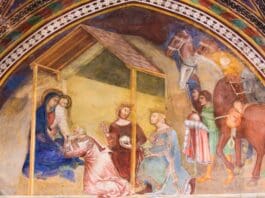
Epiphany, an ancient Christian feast, is traditionally celebrated on January 6 in both Eastern Orthodox and Eastern Catholic Churches, where it is known as Theophany, signifying God’s revelation to mankind. However, in the United States, it is observed on the Sunday between January 1 and January 6; in 2018, it fell on January 6.
Originally, Epiphany commemorated four major events, each symbolizing a different aspect of God’s revelation to humans. These are, in order of their initial significance: the Baptism of Jesus, where God the Father’s voice and the Holy Spirit’s descent affirm Jesus as God’s Son; Christ’s miracle at the Cana wedding, showcasing His divinity; the Nativity of Christ, where angels and shepherds acknowledge Jesus; and the visit of the Magi, representing the Gentile nations recognizing Christ’s divinity.
The feast evolved over time. In the West, the Nativity’s celebration eventually became Christmas, distinct from Epiphany, which continued to honor the Baptism, first miracle, and Magi’s visit. Thus, Epiphany concludes the twelve-day Christmastide, starting with Christ’s birth revelation to Israel and ending with His revelation to the Gentiles.
With further developments, Western traditions now separate the celebrations: the Baptism of the Lord occurs on the Sunday following January 6, and the Cana wedding is remembered on the subsequent Sunday.
In Europe, Epiphany’s significance rivals, and sometimes surpasses, Christmas. In Mediterranean countries like Italy, gift-exchanging occurs on Epiphany, echoing the Magi’s offerings to Jesus. Conversely, in Northern Europe, it’s common to exchange gifts on both Christmas and Epiphany, sometimes including smaller gifts during the intervening twelve days.
Editorial credit: jorisvo / Shutterstock.com
The post Solemnity of the Epiphany of Our Lord appeared first on uCatholic.
Daily Reading
Monday after Epiphany
Reading 1 1 John 3:22–4:6 Beloved: We receive from him whatever we ask, because we keep his commandments and do what pleases him. And his commandment is this: we should…
Daily Meditation
The BribeEl soborno
Click here for daily readings It is a little strange being a parent of two little boys. There are so many moments that I look back and remember myself as…




